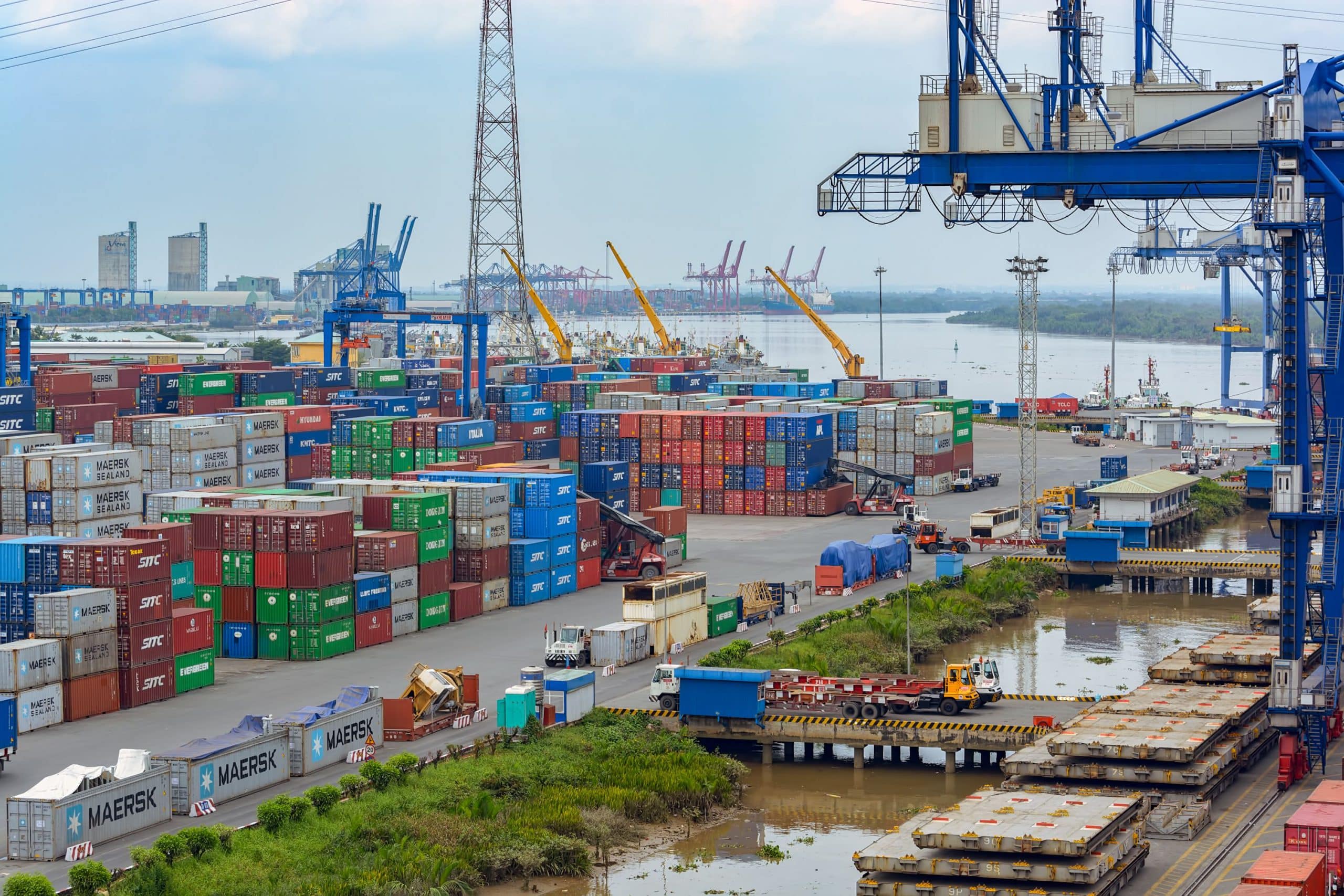Story: Associate Professor Dr. Vu Hung Cuong
As part of a general trend of de-globalization, even with the signing of free trade agreements (FTAs), technical barriers, tariffs, and non-tariff barriers will increasingly be erected.
Many people in the United States compare Bill Clinton with Donald Trump. Both are former U.S. presidents, but Clinton strongly supported free trade and globalization. In contrast, Trump represented protectionism, or de-globalization, winning the 2016 election with a campaign slogan that stated: “America First”.
Trump’s election victory and the minimal changes made to U.S. international trade policy, even after he lost to the current President Joe Biden, sent us a message: The world is de-globalizing.

Why de-globalization?
Globalization has removed many “barriers,” making the flow of goods more accessible than ever; the movement of capital, technology, and production from one country to another has also become much more straightforward. During several decades of globalization, the number of people escaping poverty increased more than ever before in human history. The world has become more prosperous, but globalization is not a magic wand that brings perfect development.
Inadequacies and a lack of clear regulations, as well as international organizations such as the International Monetary Fund (IMF) or the World Trade Organization (WTO)’s weaknesses in managing trade activities have caused many countries to grow dissatisfied, especially during global crises such as the 2008 economic crisis, the Covid-19 pandemic, and the Russia-Ukraine conflict. International trade was severely impacted by these crises, and countries with high economic openness had to find ways to enhance their self-reliance, reduce dependence on the world market, and move toward a closed, self-sufficient economy. De-globalization emerged in this context.
Many countries have gradually withdrawn from global agreements, seeking bilateral and multilateral agreements between regions and blocs of countries with common views and interests. Major powers made even bigger changes to their strategies, such as the U.S. under President Donald Trump, which withdrew from the Trans-Pacific Partnership (TPP) and returned to protectionism.
Various countries are adjusting strategies and policies related to international trade based on a foundation of de-globalization, adapting to the trend of shifting to a multipolar, multi-channel world order, moving from global-level international trade cooperation agreements to bilateral and multilateral agreements between regions and blocs of countries that are more efficient, transparent, and fair.
Can globalization and de-globalization coexist?
De-globalization is associated with protectionism, which involves imposing higher tariffs to account for the environmental and social costs of goods, reducing the transportation of goods over long distances, promoting local production, and reapplying capital control measures to reduce the influence of finance on the global economy within the framework of a multipolar, multi-channel world order. However, de-globalization does not mean the end of international trade but rather a transition to a more compact, fairer, and efficient mode of cooperation.
The most notable recent initiative is the Indo-Pacific Economic Framework (IPEF), led by the U.S. and joined by 14 countries (accounting for 40% of global GDP), which has reached a cooperation agreement to strengthen the supply chain of essential goods. This is the world’s first multilateral cooperation agreement on the supply chain of essential goods and is seen as the U.S.’s return to the region after it withdrew from the TPP in 2017.
Many issues still demand global management and cooperation. These are traditional issues such as climate change, carbon emissions, cross-border pandemics, or emerging issues like cybersecurity, global digital governance, intellectual property rights, or global minimum tax. Global governance has shifted to a multipolar world model with the increasing influence of emerging powers like China and India. Moreover, the world is gradually moving toward a new multi-channel order where major powers and non-state actors such as organizations, corporations, extremist movements, and social movements can impact the global order.
Therefore, globalization is still needed to address global issues. Still, reforms of the international structure are necessary to establish a multilateral reform program suitable for the multipolar, multi-channel world order and to better meet the responsibilities and benefits of involved countries.
Vietnam’s economy and the trend of de-globalization
Vietnam has deeply integrated into the global economy. In 2021, Vietnam was among the top 20 countries with the most extensive merchandise trade, according to a WTO report. To date, Vietnam has negotiated, signed, and implemented 19 FTAs, of which 16 are in effect with over 60 partners, covering most continents and accounting for a significant portion of global GDP. As a result, despite protectionist trends, Vietnamese goods are reaching many key markets, such as the U.S., China, the EU, Japan, and South Korea, and still have growth potential in the Middle East, Eastern Europe, South Asia, and Latin America.
In the future, Vietnam needs to continue signing, amending, and supplementing agreements to prioritize national interests. Last year’s agricultural champion, the durian, revealed the difference when informal exports were shifted to formal channels: export turnover increased about 20 times, surpassing the $2 billion mark in 2023!
Additionally, Vietnam needs effective solutions to ensure complete, responsible, and timely implementation of commitments in FTAs. Besides state commitments, businesses also bear significant responsibility.
The participation of Vietnamese enterprises in regional playgrounds, thanks to FTAs, also means that foreign enterprises can enter and compete with them in the domestic market. Without strong transformations, the risk of Vietnamese businesses “losing on home ground” is real and has been proven through many agricultural products imported into Vietnam.
Moreover, even with FTAs, technical barriers, tariffs, or non-tariff barriers will increasingly be erected in the general trend of de-globalization. The U.S., EU, Canada, the U.K., etc., are increasingly setting new standards related to supply chains, clean materials, labor, environment, governance, origin, non-tariff technical barriers, responsible business practices, food safety, etc., for imported products. The most recent example is the E.U.’s Carbon Border Adjustment Mechanism (CBAM) to ensure fairness for European businesses.
This will require businesses to thoroughly research and have a good understanding of the international trade agreements that Vietnam has signed and participated in. However, this can present a significant challenge as 95% of Vietnamese businesses are small and medium-sized enterprises with very limited resources for legal or research purposes.
Internally, businesses need to “renew themselves” and enhance their capacity and resilience to market crises. Digital transformation, or increasing the application of digital technology in managing and operating all stages in the production and trade process, is a breakthrough step but requires investment resources, technology, and management personnel. Choosing one or a few production stages to profoundly invest in and “enter” the supply chain is considered a smart and suitable strategy for small and medium-sized enterprises.
Associate Professor Dr. Vu Hung Cuong has 29 years of experience at the Vietnam Academy of Social Sciences, including 12 years as Director and holding equivalent positions. His main areas of research are the private sector, enterprise development, and the regional economy. He has chaired and participated in many national-level projects and authored and co-authored many monographs. Dr. Cuong has also written and co-written many articles and papers for international and domestic conferences and journals.










